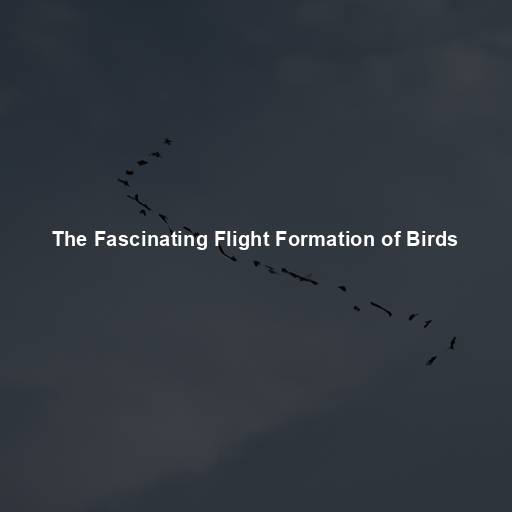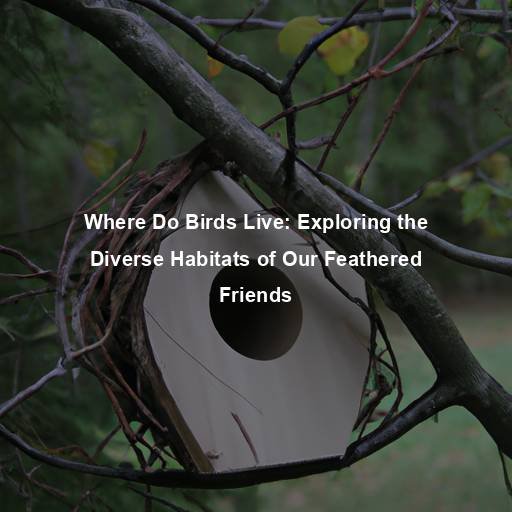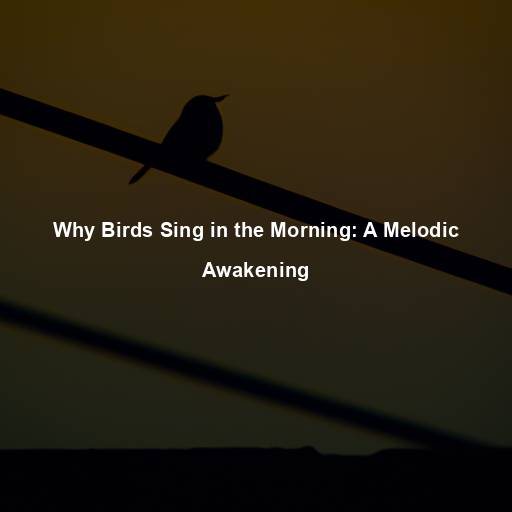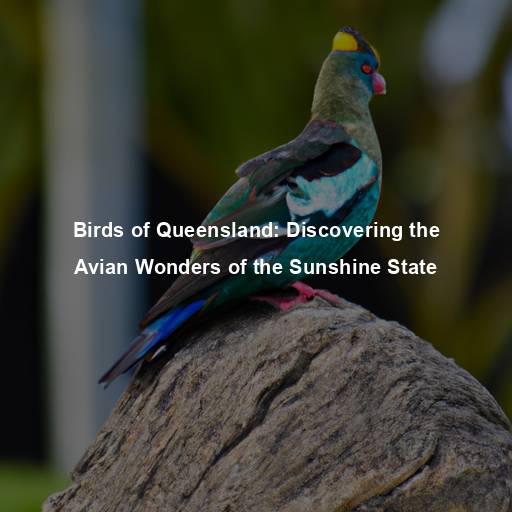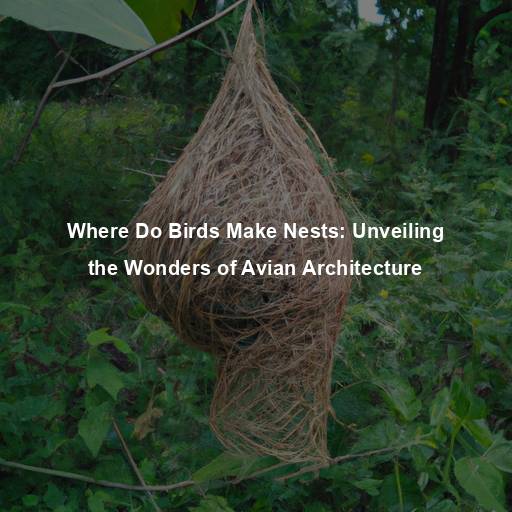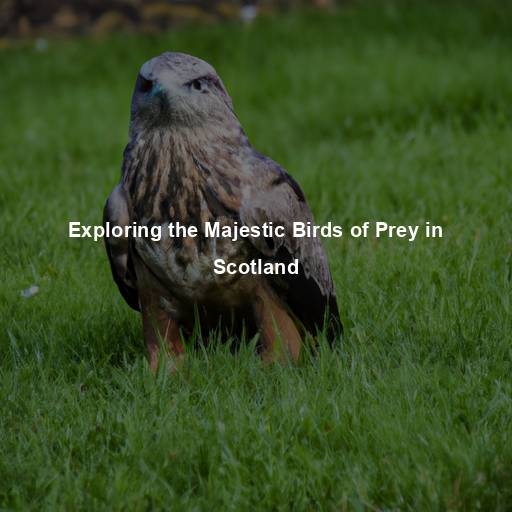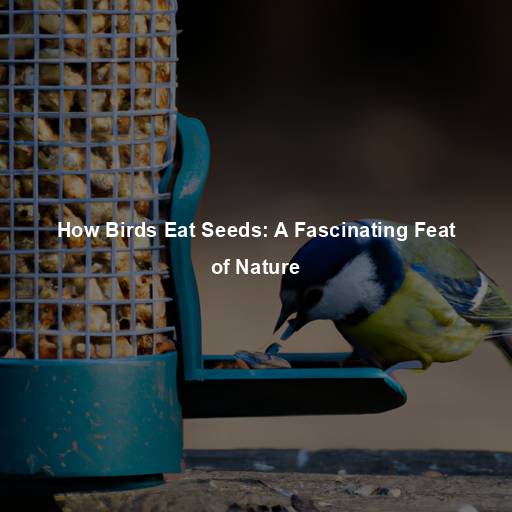The Fascinating Flight Formation of Birds
Last Updated on July 16, 2023 by Evan
Contents
- 1 The Wonders of Bird Migration
- 1.1 The V Formation: A Sight to Behold
- 1.2 The Advantages of Flying in Formation
- 1.3 The Science Behind the V Formation
- 1.4 Leadership and Rotating Positions
- 1.5 The Role of Geese in Popularizing the V Formation
- 1.6 The Power of Teamwork
- 1.7 Beyond the V Formation: Other Flight Patterns
- 1.8 A Natural Phenomenon Worthy of Our Wonder
- 1.9 Aerodynamic Efficiency
- 1.10 Communication and Coordination
- 1.11 Leadership and Decision-making
- 2 The Science Behind the Formation
- 3 Strength in Numbers
- 4 Other Flight Formations in the Avian World
- 5 A Window into the Avian World
- 6 FAQs: What Birds Fly in V Formation?
The Wonders of Bird Migration
Throughout history, our fascination with birds and their awe-inspiring qualities has remained unwavering. Among the multitude of captivating behaviors exhibited by these creatures, none have puzzled us more than their flight formations – especially the enigmatic “V” shape. But have you ever delved into the depths of why, oh why, birds choose to soar in this distinctive pattern? Brace yourself as we embark on an enthralling quest to unravel the secrets shrouded within this mesmerizing phenomenon.
The V Formation: A Sight to Behold
Have you ever gazed at the vast expanse of the sky and seen a mesmerizing spectacle unfolding before your eyes? It’s the sight of birds, majestic and free, gracefully gliding through the atmosphere in a formation that leaves us breathless. Their synchronized wingbeats create a symphony of motion, as if nature itself has choreographed their flight. But there is more to this ornithological phenomenon than meets the eye – it’s not just a beautiful display, but an ingenious strategy that these avian acrobats have mastered.
The Advantages of Flying in Formation
Birds have evolved to fly in formation for several reasons, each contributing to their survival and efficiency during long-distance migrations. Let’s explore some of the advantages that this flight pattern offers:
-
Discover the Secrets of Bird Flight: Ever wondered how these feathery creatures effortlessly soar through the skies? It turns out, there’s a method to their airborne madness. Through a captivating choreography known as the V formation, birds tap into the art of energy conservation.
-
Improved Navigation: Flying in formation helps birds maintain a steady course, especially during migratory journeys spanning thousands of miles. The leader sets the direction, and the followers can visually track their position relative to the leader and the ground, making navigation more efficient.
-
Social Cohesion: The V formation promotes social cohesion within the flock. Birds are social creatures, and the close proximity during flight allows for effective communication, coordination, and bonding between individuals. This unity is especially crucial when facing challenges such as predators or adverse weather conditions.
The Science Behind the V Formation
Have you ever wondered about the mesmerizing sight of birds flying in a V formation? It’s truly perplexing how they effortlessly navigate the skies, defying gravity. But fear not, dear readers, as we unveil the secrets hidden in the complex realm of aerodynamics and the enigmatic dance of air currents. When a bird gracefully flaps its wings, it not only propels itself forward but also gives rise to a puzzling downward airflow, aptly named the downwash.
As these majestic creatures take to the skies, a fascinating phenomenon unfolds before our very eyes. In an intricate choreography of flight, birds converge, forming a mysterious V-shaped formation. But what purpose does this enigmatic pattern serve? It seems that nature’s winged wonders have mastered the art of aerodynamics, strategically positioning themselves to harness the invisible currents created by their avian comrades.
Leadership and Rotating Positions
Within a flock, the position of the lead bird is crucial. The leader bears the brunt of the aerodynamic resistance and must work the hardest. To alleviate fatigue, birds often rotate the leadership role, allowing different individuals to take turns at the front. This rotation distributes the physical demands among the flock, ensuring a fair distribution of effort.
The Role of Geese in Popularizing the V Formation
When discussing bird flight formations, it is impossible not to mention the Canada geese, whose migratory journey has become a symbol of the V formation. These majestic birds are known for their long-distance flights, often spanning thousands of miles. The sight of a flock of geese gracefully gliding through the sky in perfect V formation has captured the imagination of people worldwide.
The Power of Teamwork
Witness the awe-inspiring spectacle of birds soaring through the vast expanse of the sky, united in a mesmerizing V formation. This captivating display serves as a mesmerizing reminder of the extraordinary potential that lies within the power of collaboration and teamwork. The symphony of wings beating in harmony illuminates the boundless achievements that can be unlocked when individuals set aside their differences and unite for a common purpose. Behold the enigma of the V formation, a living testament to the majestic beauty of community and the immense rewards it bestows upon all who embrace its essence.
Beyond the V Formation: Other Flight Patterns
Birds in a “V” formation is a well-known sight in the skies, but did you know that they have more flight patterns up their wings? These feathered creatures are not restricted to a single shape during their aerial journeys. Depending on factors like their species and the conditions of their surroundings, birds may opt for alternative flight formations. Let’s delve into some of the other fascinating patterns that these avian acrobats employ in their quest for efficient and safe flight.
There’s something truly mesmerizing about the elegant choreography of birds as they glide through the sky. One of the most fascinating aerial formations is the Line Formation, where feathered aviators fly in perfect harmony, aligned seamlessly one after another. This captivating display is commonly witnessed when our feathered friends embark on excursions to seek nourishment or undertake shorter voyages. The sheer synchronicity of their flight patterns casts a spell of bewilderment, leaving us in awe of nature’s magnificent tapestry.
- Wedge Formation: Similar to the V formation, the wedge formation involves birds flying in a wider, more open pattern. This shape allows for increased visibility and maneuverability, which is beneficial when birds are foraging or facing uncertain conditions.
A Natural Phenomenon Worthy of Our Wonder
The flight formations of birds, particularly the V formation, are a testament to the wonders of nature. Through centuries of evolution and adaptation, these avian creatures have perfected the art of flying in unison, showcasing their remarkable abilities and resilience.
As we cast our eyes towards the celestial symphony unfolding above, we are bestowed with invaluable insights into the art of collaboration, resilience, and the profound influence of collective efforts in conquering challenges. The mesmerizing V-shaped formation transcends its role as a mere flight trajectory, morphing into a poignant emblem of the exquisite interplay witnessed in the realm of nature. Thus, when we chance upon a fleet of avian marvels elegantly navigating the heavens, let us pause in awe, embracing the boundless wonders of their celestial choreography and the unbreakable connections they exemplify. The Unifying Forces of Avian Skies
The V formation is not a recent phenomenon but has been observed in birds for thousands of years. It is believed to have evolved as a survival strategy, allowing birds to maximize their energy efficiency and enhance their chances of reaching their destination safely.
Aerodynamic Efficiency
Have you ever wondered why birds always seem to fly in a V formation? Well, it turns out it’s not just a random flight pattern. These feathered creatures have actually mastered the art of energy conservation. By flying in a V shape, they can minimize the amount of energy required for their long and arduous journeys.
Communication and Coordination
Imagine soaring through the sky in perfect harmony with a flock of fellow birds. Their wings beat in synchrony, creating a mesmerizing display of unity and coordination. This magical phenomenon, known as flying in formation, serves a greater purpose beyond just aesthetic wonderment.
By flying in a V formation, birds are able to maintain constant visual contact with their fellow flock members, enabling them to swiftly exchange vital information. Whether it’s a sudden change in direction, a looming threat, or the discovery of a delectable food source, these feathered friends use their synchronized movement to effectively communicate and keep the group connected. This intricate dance not only ensures their togetherness but also enhances their collective ability to respond swiftly to the ever-changing environment they navigate.
Leadership and Decision-making
Within the V formation, a hierarchy exists, with the lead bird occupying the most challenging position at the front. The lead bird must make critical decisions about the flight path, navigating obstacles, and finding suitable resting or feeding spots. The ability to share this leadership role among flock members allows for a collective decision-making process, reducing the burden on any single individual and benefiting the entire group.
The Science Behind the Formation
Delving into the intricate world of avian aerodynamics, we unveil the enigmatic secrets behind the mesmerizing V formation. By unraveling the complex interplay of fluid dynamics and the capricious dance of air currents, we gain profound insights into the flight patterns of our feathered friends. With each wingbeat, a bird deftly conjures both the ethereal force of lift and the beguiling resistance of drag. The harmonious symphony of pressure differentials, with the ethereal low pressure above and the celestial high pressure below, orchestrates a ballet of flight that leaves us in a state of awe and bewilderment.
When birds fly in a V formation, they position themselves in a manner that capitalizes on these airflow patterns. The following birds strategically position themselves to take advantage of the upwash created by the bird ahead, which is the area of increased air pressure above the wings. This upwash provides an additional lift force, reducing the effort required for each individual bird to maintain flight.
Strength in Numbers
When it comes to the mesmerizing phenomenon of birds flying in a V formation, the numbers are as fluid as the wind that guides them. From species to species, flock size to flock size, and even the ever-shifting environmental conditions, the possibilities are as varied as the colors of a peacock’s plume. And let’s not forget the grand spectacle of bird migrations, where massive flocks, reminiscent of airborne cities, gracefully traverse the skies with hundreds, if not thousands, of individuals moving in perfect synchrony. It’s a sight that leaves us in awe, longing for answers to the enigma of their orchestrated flight.
Witness the extraordinary phenomenon of birds flocking together, a mesmerizing display of strength, unity, and survival. These magnificent creatures synchronize their movements, creating a captivating spectacle that leaves us in awe of their ability to navigate the skies with such precision and grace. As they soar in unison, they not only ward off potential threats but also share invaluable wisdom on finding sustenance in the wilderness, proving once again their unwavering resilience in the face of adversity.
Other Flight Formations in the Avian World
There is so much more to avian flight than the classic V formation that we all know. Birds, in their ever-mysterious ways, demonstrate an intriguing array of flight patterns that vary from species to species, and even from one situation to another. Prepare to be enthralled as we delve into the captivating world of alternative flight formations observed in the avian realm.
The J Formation
As birds take to the skies, they embark on a fascinating journey that often leaves us in awe. One such remarkable phenomenon is the enigmatic J formation, where these magnificent creatures shape-shift into a curved pattern reminiscent of the letter “J”. This captivating display predominantly occurs when birds are ascending to new heights, whether gracefully taking flight or skillfully gliding on the currents of warm air known as thermals. By adopting this elegantly curved structure, birds cleverly exploit updrafts while ensuring they never lose sight of their fellow aviators.
The Echelon Formation
When birds take to the sky, they often mystify us with their seemingly perfect formation. One such formation that sparks intrigue is the echelon formation. It’s as if these winged creatures are choreographing a mesmerizing dance, each bird flying diagonally with a gentle offset from the bird above or below. This synchronized spectacle serves a crucial purpose- it helps them navigate through gusty winds, maintaining their balance and effortlessly adjusting their flight path.
The Circular Formation
Have you ever marveled at the mesmerizing dance of birds in the sky? These enigmatic creatures, like the elegant pigeons, have devised a bewitching flight formation – the circular motion. Whether they are preparing to touch down or partaking in captivating courtship rituals, these birds glide in harmony, their wings perfectly synchronizing like a symphony. This captivating circular arrangement not only facilitates seamless communication but also enhances the sheer grace and elegance of their mesmerizing aerial acrobatics.
A Window into the Avian World
Witnessing the awe-inspiring flight formations of birds is like peering through a kaleidoscope of nature’s ingenuity, offering us a mesmerizing glimpse into eons of adaptation and complex behaviors. It’s astonishing to comprehend how these intricate patterns weave together the physical prowess required to conquer obstacles with the social cohesion that fosters communal survival. Truly, the avian marvels never cease to perplex us with their bursting tapestry of survival strategies.
As we marvel at the sight of birds flying in formation, let us appreciate the beauty and complexity of the natural world. The V formation, with its aerodynamic efficiency, effective communication, and shared leadership, serves as a testament to the ingenuity and resilience of avian species.
As one’s eyes wander towards the vast expanse above, one cannot help but be captivated by the mesmerizing sight of a flock of birds in flight. In this wondrous moment, a profound appreciation for the enigmatic synchrony of their wingbeats and the dance-like coordination of their movements ensues. The marvel of these winged beings unfurls, leaving one in awe of the intricate web of existence that envelops us all.
FAQs: What Birds Fly in V Formation?
What is the purpose of birds flying in a V formation?
There’s something truly mesmerizing about the synchronized dance of birds fluttering across the sky in a V formation. It’s not just a beautiful spectacle but an ingenious strategy that nature has crafted. As each bird flaps its wings, it creates a subtle disturbance in the air, generating a magical upward draft that offers a helping hand to the birds trailing behind. This ingenious formation not only saves their precious energy during arduous migrations but also serves as a secret language of communication, allowing them to navigate and stay on track as a unified force. It’s a fascinating display of nature’s wisdom and the boundless possibilities that emerge from collective effort.
Which bird species are known to fly in V formation?
It’s a mesmerizing phenomenon witnessed in the avian world – the graceful flight of birds in V formation during their migratory journeys. Amongst the distinguished cast, the iconic Canada goose emerges as a notorious advocate of this aerial symphony. Yet, let us not forget the other esteemed members of this celestial ensemble, such as ducks, pelicans, cranes, and swans, who curiously partake in this synchronized choreography. Nonetheless, let us not be fooled by the illusion of uniformity, for not all members within these species shall always engage in this captivating V-shaped display, as each feathered troupe is subject to its own enchanting whims.
How do the birds determine their positions in the V formation?
In the mesmerizing world of bird migration, a mysterious phenomenon takes flight. Picture this: a V-shaped formation, where the avian elite gracefully navigate the winds. But wait, there’s more to this remarkable sighting! The dynamic dynamics of this avian posse unravel with every wingbeat. The lead bird, a seasoned flyer, valiantly steers the course, only to pass the torch to its feathered comrades when fatigue sets in. As this enchanting baton of responsibility is passed, the flock dances with utmost precision. They adjust their speed and synchronize their wings with their fellow flyers, forming an unbelievable bond that defies nature itself.
Do all migrating birds fly in V formation?
Migration, a captivating phenomenon that unveils the mysteries of the avian world, holds surprises at every turn. Contrary to popular belief, not all birds soar through the skies in V formation. Diversity thrives amongst these winged wanderers, as each species, with its own set of peculiar preferences, navigates the vast expanses of the world. Hawks and eagles, those regal rulers of the skies, opt for solo or small group migrations, eschewing the conventional V-shaped flight pattern. Others follow a more liberal approach, meandering in loose clusters or taking a scatter-shot trajectory. The course they choose is molded by a delicate interplay of factors: species distinction, distance to be traversed, prevailing weather conditions, and even the whims of each individual avian voyager. Step into the beguiling realm of avian migration, where the beautiful tapestry of fickle flight patterns unfurls before our eyes.
Do birds always fly in a perfect V shape?
When it comes to the enigmatic ballet of birds soaring in the sky, the formation is far from an open-and-shut case. Lurking beneath the surface of those graceful, V-shaped patterns lies a whimsical world of unpredictability that will leave you pondering. While it’s true that some birds adhere to the classical V formation with methodical precision, the truth is that nature loves to toss a curveball or two into the mix. Factors as capricious as wind direction, speed, and the peculiar quirks of individual birds can throw the formation into disarray, creating a mesmerizing spectacle of staggered or asymmetrical shapes. Curling up this riddle even further is the size of the flock – when the bird brigade is sparse, the undeniable allure of the V can fade away into the wind. Yet, one thing remains constant amidst this chaotic dance: the avian clan’s unyielding pursuit of harnessing the power of unity, overcoming wind resistance, and ensuring seamless communication.

